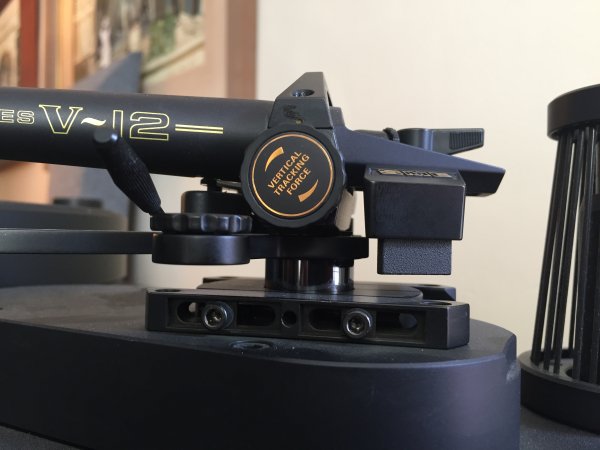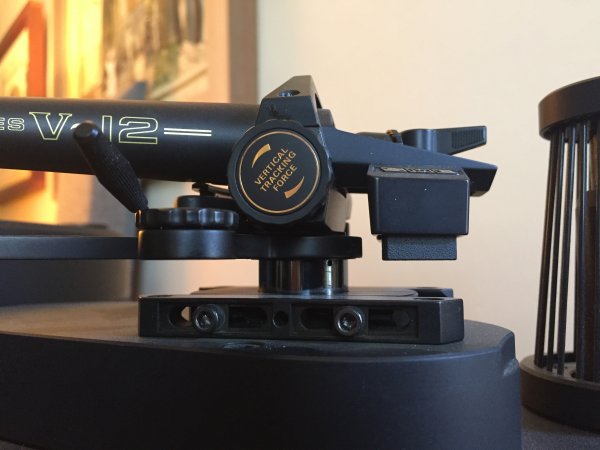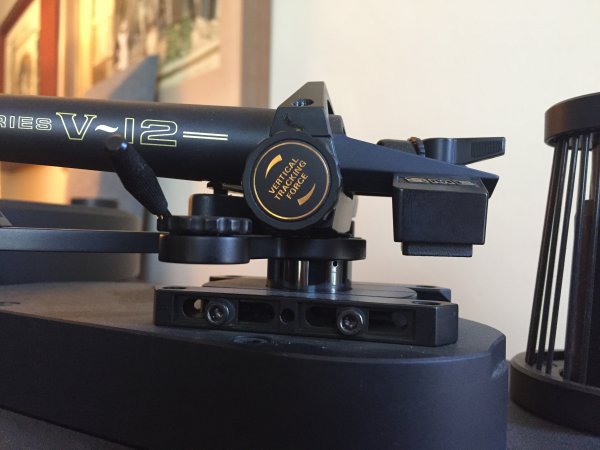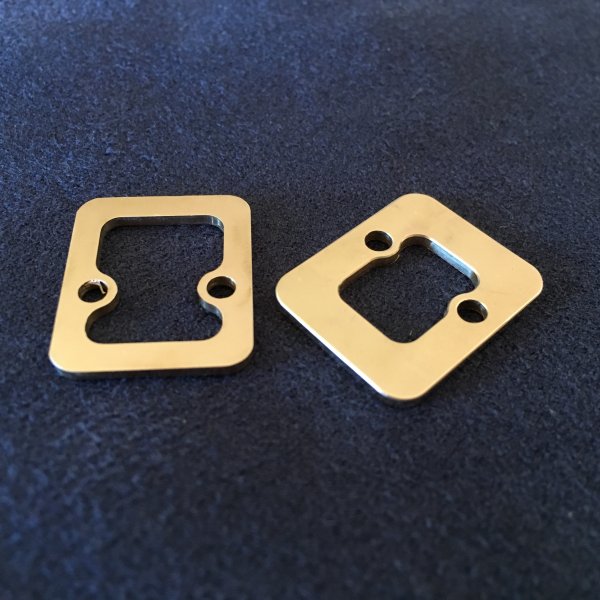I have been experimenting with adjusting my tonearm's counterweight. I can add or remove extra weights and slide the counterweight mechanism toward or away from the pivot point of my arm. One can see from the three photographs below how the extra weights change the size of the counterweight, lower its center of gravity, and alters its position relative to the arm's pivot point.
I am curious how these changes may or may not affect the overall effective mass of the arm and the moment of inertia of the system. I would think these properties would interact with the cartridges compliance to change the sound. I assume that the added weight near the pivot also loads the arm's bearing to a greater extent which may affect the way resonances travel through and escape from the arm into the arm base.
Has anyone else done such experiments with his arm? Do you hear any differences? Is there a theoretical advantage to one position or another? As with the recent cartridge loading thread, it was fascinating to learn about the theory of cartridge loading, but in the end, final settings are often done by listening. I suspect that this may also be the case with these adjustments because of their interaction with the cartridge.
I do hear slight differences, but I'd like to start a discussion about this topic before describing what I hear.



I am curious how these changes may or may not affect the overall effective mass of the arm and the moment of inertia of the system. I would think these properties would interact with the cartridges compliance to change the sound. I assume that the added weight near the pivot also loads the arm's bearing to a greater extent which may affect the way resonances travel through and escape from the arm into the arm base.
Has anyone else done such experiments with his arm? Do you hear any differences? Is there a theoretical advantage to one position or another? As with the recent cartridge loading thread, it was fascinating to learn about the theory of cartridge loading, but in the end, final settings are often done by listening. I suspect that this may also be the case with these adjustments because of their interaction with the cartridge.
I do hear slight differences, but I'd like to start a discussion about this topic before describing what I hear.








